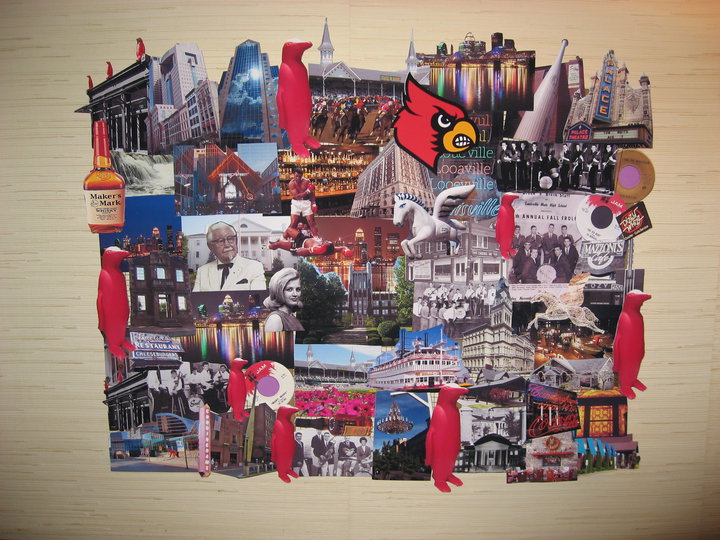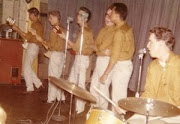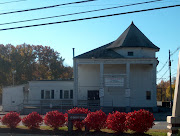---------- Forwarded message ----------
From: Rex Cornelison <trpciii@me.com>
Date: Sun, May 30, 2010 at 9:00 AM
Manual High School occupied the two square blocks between Lee Street and Avery bounded by 1st and 2nd. We were in the next block on 1st between Avery and Brandies with Brook Street the next one over. At the end of the school field on Avery, all the guys who smoked congregated at lunch and breaks. When the principal A.J. Ries made surprise visits (outside the wire fence), it was not to stop the smoking and congregating, it was to make us pick up the trash and butts and put them in a barrel magically situated for our use. There was an unwritten pact-we smoked at the end of the field and the teachers smoked by the boiler room.
Around the corner from 1st on Brandies across from the Sharp's house there was a small brick office building where Honeywell had a local office. At the intersection of Brook and Brandies there was Caldwell Tanks which manufactured giant steel tanks used for gasoline and chemical storage. On the other corner was a large train repair shop. The smoke and noise of these two facilities permeated the neighborhood at seemingly all hours lending a pungent aroma which combined with the smoke and soot of coal fired household furnaces to create a patina in the atmosphere. On the other corner of Brook and Brandies was Schenk's Liquors, a small single story building with Perma Stone facing and the Schenk's new Cadillac parked outside. The fathers in the neighborhood (black and white) made the regular trek to Schenk's for that magic potion to placate life's disappointments. Mrs. Schenk was in her early fifties, had flaming red hair, wore tight pedal pushers, open back high heels and rhinestone encrusted cat's eye glasses. Several times a day she ventured outside the store with her two sable color Pekinese Dogs on Rhinestone leashes. The dogs were a permanent fixture at the store and yapped loudly at the entrance of each new patron. The guys in the neighborhood shopped elsewhere for fear of running into one's father.
Brook street was black as was the alley between 1st and Brook. There was an 8 foot concrete block wall punctuated with locked wooden doors running the length of the street separating the 1st street houses from the alley and our black neighbors. There were run down apartment type houses and shacks with aged bare wood, the paint long since peeled away facing the alley. Symbolically the alley is where we put the trash for collection and where the coal truck would arrive to unload coal by wheelbarrow along the broken down brick pathway from the alley to the makeshift chute under the house. In the daytime we vaulted the walls or opened the gates to play with the other kids but never visited each other's homes. When Rock and Roll arrived we shared the music. After dark we dared not venture beyond the wall for the alcohol and life of despair made it a rough place to be and only the drunks, gamblers and ladies of the evening boldly claimed it as their own. Combined with the noise from the factories, nearby traintracks and eventually Interstate traffic from the newly constructed Interstate 65 there was an ever present din. Even today I can't stand silence.
There was also the white owned R&B radio station WLOU a few blocks away. ( See links for website ) Rumor has it the transmitter was built by engineering students at U of L, but in any event the signal leakage was so severe that even on our party line telephone we received a signal so that literally every conversation had WLOU in the background. When I installed my 100 watt amp in the attic all I had to do was attach a ground wire and the signal was stronger than with a receiver. The guys in the neighborhood (black and white) tried to copy the black DJ's patter-we thought the white guys sounded more black than the black guys (this was obviously before it was not PC to do so and even Moms Mabley and Redd Foxx later poked fun at blacks and whites alike). One of our favorite pranks was to call girls and pretend to be from WLOU on a contest call. I was only 12 years old in 1956 and 1957 but the records of Elvis and other rock and roll artists were at the top of the black charts in those early years, and it was the only place you could hear the real versions of R&B. When we speak of the history of Rock and Roll radio in Louisville, no one ever mentions the black or "race" stations, but those are the type of stations where Elvis and early Rock and Roll stars heard the music. It's just that you had to listen in secret, and certainly out of earshot of your parents. This is what made WLOU and its invasion of the airwaves so ironic-the parents could not make us "turn off the radio" however faint the signal.
The neighborhood was indeed a conglomeration.
Rock On!
From: Rex Cornelison <trpciii@me.com>
Date: Sun, May 30, 2010 at 9:00 AM
Manual High School occupied the two square blocks between Lee Street and Avery bounded by 1st and 2nd. We were in the next block on 1st between Avery and Brandies with Brook Street the next one over. At the end of the school field on Avery, all the guys who smoked congregated at lunch and breaks. When the principal A.J. Ries made surprise visits (outside the wire fence), it was not to stop the smoking and congregating, it was to make us pick up the trash and butts and put them in a barrel magically situated for our use. There was an unwritten pact-we smoked at the end of the field and the teachers smoked by the boiler room.
Around the corner from 1st on Brandies across from the Sharp's house there was a small brick office building where Honeywell had a local office. At the intersection of Brook and Brandies there was Caldwell Tanks which manufactured giant steel tanks used for gasoline and chemical storage. On the other corner was a large train repair shop. The smoke and noise of these two facilities permeated the neighborhood at seemingly all hours lending a pungent aroma which combined with the smoke and soot of coal fired household furnaces to create a patina in the atmosphere. On the other corner of Brook and Brandies was Schenk's Liquors, a small single story building with Perma Stone facing and the Schenk's new Cadillac parked outside. The fathers in the neighborhood (black and white) made the regular trek to Schenk's for that magic potion to placate life's disappointments. Mrs. Schenk was in her early fifties, had flaming red hair, wore tight pedal pushers, open back high heels and rhinestone encrusted cat's eye glasses. Several times a day she ventured outside the store with her two sable color Pekinese Dogs on Rhinestone leashes. The dogs were a permanent fixture at the store and yapped loudly at the entrance of each new patron. The guys in the neighborhood shopped elsewhere for fear of running into one's father.
Brook street was black as was the alley between 1st and Brook. There was an 8 foot concrete block wall punctuated with locked wooden doors running the length of the street separating the 1st street houses from the alley and our black neighbors. There were run down apartment type houses and shacks with aged bare wood, the paint long since peeled away facing the alley. Symbolically the alley is where we put the trash for collection and where the coal truck would arrive to unload coal by wheelbarrow along the broken down brick pathway from the alley to the makeshift chute under the house. In the daytime we vaulted the walls or opened the gates to play with the other kids but never visited each other's homes. When Rock and Roll arrived we shared the music. After dark we dared not venture beyond the wall for the alcohol and life of despair made it a rough place to be and only the drunks, gamblers and ladies of the evening boldly claimed it as their own. Combined with the noise from the factories, nearby traintracks and eventually Interstate traffic from the newly constructed Interstate 65 there was an ever present din. Even today I can't stand silence.
There was also the white owned R&B radio station WLOU a few blocks away. ( See links for website ) Rumor has it the transmitter was built by engineering students at U of L, but in any event the signal leakage was so severe that even on our party line telephone we received a signal so that literally every conversation had WLOU in the background. When I installed my 100 watt amp in the attic all I had to do was attach a ground wire and the signal was stronger than with a receiver. The guys in the neighborhood (black and white) tried to copy the black DJ's patter-we thought the white guys sounded more black than the black guys (this was obviously before it was not PC to do so and even Moms Mabley and Redd Foxx later poked fun at blacks and whites alike). One of our favorite pranks was to call girls and pretend to be from WLOU on a contest call. I was only 12 years old in 1956 and 1957 but the records of Elvis and other rock and roll artists were at the top of the black charts in those early years, and it was the only place you could hear the real versions of R&B. When we speak of the history of Rock and Roll radio in Louisville, no one ever mentions the black or "race" stations, but those are the type of stations where Elvis and early Rock and Roll stars heard the music. It's just that you had to listen in secret, and certainly out of earshot of your parents. This is what made WLOU and its invasion of the airwaves so ironic-the parents could not make us "turn off the radio" however faint the signal.
The neighborhood was indeed a conglomeration.
Rock On!












No comments:
Post a Comment